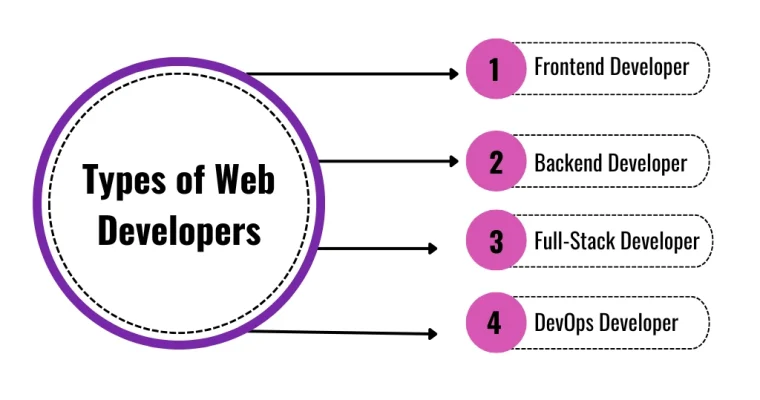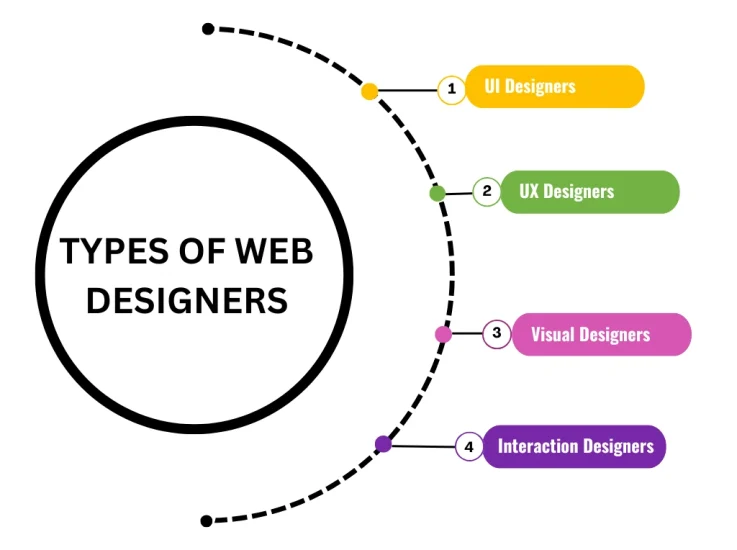

Web Developer vs Web Designer: What's the difference?
In today’s digital world, websites are essential for building a strong online presence. But do you know who makes these websites look great and work smoothly? That’s where web developers and web designers come in. They have different roles, but both are key to creating websites that stand out and perform well.
Web developers and web designers both help create websites, but they have different skills and roles. Developers focus on coding and making the site work, like builders and architects. Designers focus on the look and feel of the site, creating layouts and improving user experience, like artists.
In this blog, we’ll explain their skills, types and how their roles differ, how they work together, and what makes each one important. Whether you’re curious or thinking about a tech career, this guide will make it easy to understand both paths.
What is a Web Developer?
A web developer is a professional who creates and maintains websites and web applications. Their main job is to build the structure and functionality of a website, making it both user-friendly and visually appealing. Web developers work with a variety of programming languages, such as HTML, CSS, and JavaScript, to design the layout, features, and interactive elements of a site.
Types of Web Developers

- Frontend Developers: Focus on the user-facing part of the website.
- Backend Developers: Manage server-side logic and databases.
- Full-Stack Developers: Combine both frontend and backend expertise.
- DevOps Developers: Focus on deployment, integration, and server management.
Responsibilities of a Web Developer
- Building and Maintaining Websites: Writing code to create the backbone of a website.
- Frontend Development: Implementing the visual aspects of a website using languages like HTML, CSS, and JavaScript.
- Backend Development: Handling server-side functionality, databases, and application logic using languages like PHP, Python, or Ruby.
- Testing and Debugging: Ensuring the website operates smoothly across all devices and browsers.
Skills Required
- Proficiency in programming languages and frameworks (e.g., React, Angular, Django).
- Understanding of databases and server management.
- Knowledge of version control systems like Git.
- Problem-solving and analytical skills.
Tools Used by Web Developers
- Frontend: HTML, CSS, JavaScript, React, Vue.js, Angular.
- Backend: Node.js, Django, Ruby on Rails, Laravel.
- Database: MySQL, PostgreSQL, MongoDB.
- Version Control: Git, GitHub, GitLab.
- Testing Tools: Selenium, Jest, Mocha.
- Development Environments: Visual Studio Code, Sublime Text, IntelliJ IDEA.
What is a Web Designer?
A web designer is a professional responsible for creating and designing the visual elements of websites. They focus on the look, feel, and overall user experience of a website. This involves planning the layout, selecting colors, fonts, images, and ensuring the website is visually appealing and easy to navigate.
They also pay attention to usability, accessibility, and performance to make sure the website is user-friendly and fast.
Types of Web Designers

- UX Designers: Specialize in user experience design.
- UI Designers: Focus on user interface elements and interactions.
- Visual Designers: Blend graphic design with web design principles.
- Interaction Designers: Concentrate on the interactive aspects of websites.
Responsibilities of a Web Designer
- Creating Layouts and Wireframes: Designing the structure and navigation flow of a website.
- Visual Design: Choosing colors, fonts, images, and other visual elements to align with the brand identity.
- User Experience (UX) Design: Ensuring the website is easy to navigate and provides a positive user experience.
- User Interface (UI) Design: Crafting interactive elements like buttons, forms, and sliders.
Skills Required
- Proficiency in design tools like Adobe XD, Sketch, or Figma.
- Knowledge of UX/UI principles.
- Basic understanding of HTML and CSS.
- Creativity and an eye for detail.
Tools Used by Web Designers
- Design Tools: Figma, Adobe XD, Sketch, Photoshop, Illustrator.
- Prototyping Tools: InVision, Marvel, Axure RP.
- Collaboration Tools: Miro, Zeplin, Slack.
- Testing Tools: Hotjar, Crazy Egg.
Comparison of Web Developer and Web Designer
| Aspect | Web Developer | Web Designer |
|---|---|---|
| Primary Function | Focuses on coding, building, and maintaining the functionality of websites. | Responsible for creating the visual layout, style, and user experience. |
| Average Salary | ₹5,00,000–₹16,00,000/year(varies by experience, location, and specialization). | ₹3,00,000–₹12,00,000/year(varies by experience, location, and specialization). |
| Educational Background and Qualification | Typically holds a degree in Computer Science, Software Engineering, or related fields. | Often has a degree in Graphic Design, Fine Arts, or related disciplines. |
| Technical Skills | Proficient in programming languages like HTML, CSS, JavaScript, PHP, Python, and frameworks (e.g., React, Angular). | Skilled in design tools like Adobe XD, Figma, Photoshop, and Illustrator. Familiarity with HTML and CSS is beneficial. |
Understanding the difference between a web developer and a web designer is important if you’re looking at careers in the web industry or planning a website. Web designers focus on how a website looks and feels, creating its visual style and user experience. Web developers, on the other hand, build the website using code to make those designs work. Whether you’re a creative person who loves design or a problem solver who enjoys coding, the web industry has exciting opportunities that match your skills and interests.
Share:
Most Popular


Design career- Designers types, Role and Salary

Web Developer vs Web Designer: What’s the difference?

Data Analyst Vs Data Scientist Vs Data Engineer: Key Differences
Subscribe To Our Weekly Newsletter
Categories
Related Posts

Top 10 Career Options After BA, BCA and BCom
Top 10 Career Options After BA, BCA and BCom Completing your graduation is a big achievement, but it’s also a time when many students feel

Design career- Designers types, Role and Salary
Design career- Designers types, Role and Salary The design field has become an exciting and popular career choice, combining creativity, innovation, and practicality. Designers shape

Web Developer vs Web Designer: What’s the difference?
Web Developer vs Web Designer: What’s the difference? In today’s digital world, websites are essential for building a strong online presence. But do you know

Data Analyst Vs Data Scientist Vs Data Engineer: Key Differences
Data Analyst Vs Data Scientist Vs Data Engineer: Key Differences In today’s world, data plays a huge role in helping businesses make better decisions. The